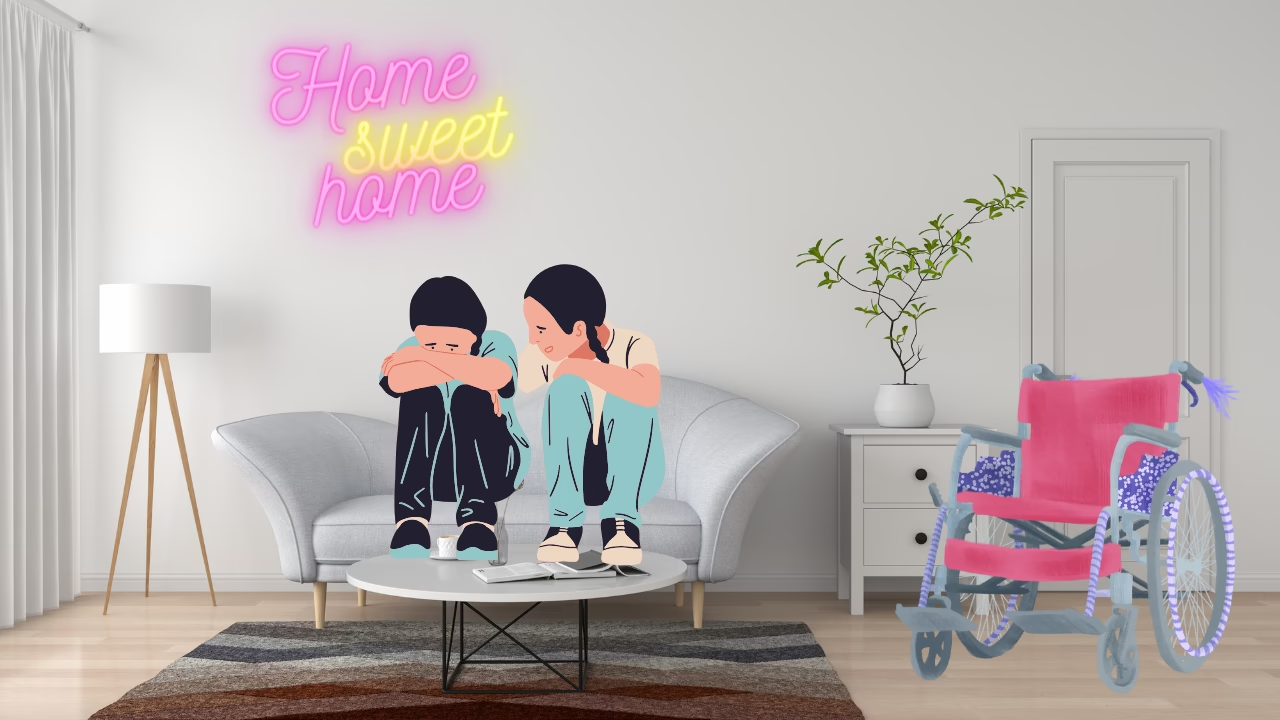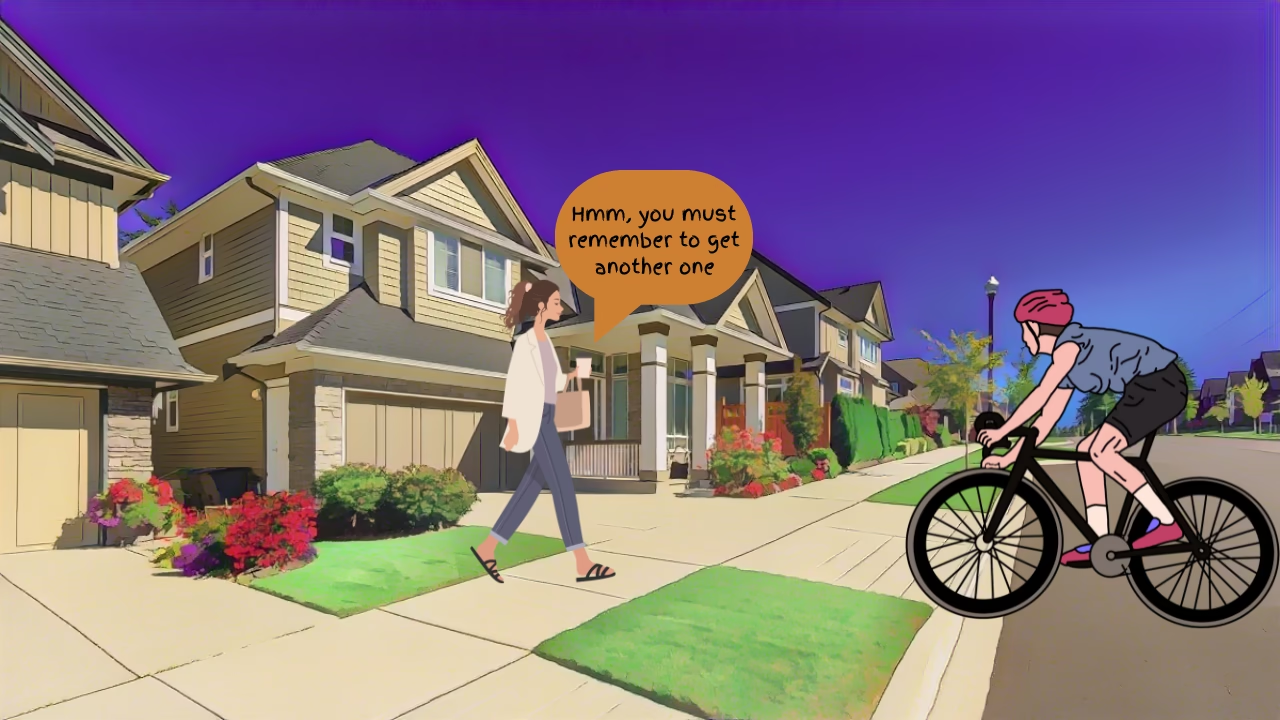🧠 What are bodyweight circuits, and why are they powerful?
Simply, bodyweight circuits are short sequences of exercises that use your own body as resistance. Basically, no machines, no weights, and no gym required. You just move from one exercise to the next with minimal rest. Truly, you give your whole body a chance to work in a focused, efficient way.
In fact, these exercises are powerful. Effectively, they combine strength, flexibility, endurance, and coordination into one routine. When you exercise regularly, you can see benefits. Even if your exercise is just 10 minutes at a time. Ultimately, these circuits can help you feel stronger, more stable, and more energised. Fantastic, especially if you’re housebound or dealing with chronic fatigue.
Yet, best of all? Happily, bodyweight circuits take up hardly any space! Just a patch of floor or a sturdy chair. Coupled with the willingness to move at your own pace, you’ve got more than enough to get started. Also, these circuits can easily be adapted to your daily energy. Indeed, it makes them one of the most accessible and empowering home workouts around.
🕒 How do you structure bodyweight circuits at home?
Initially, start simple. Essentially, a bodyweight circuit is a series of exercises performed sequentially. Conveniently, you can base it on time or reps. Whichever suits your energy better.
For example, time-based:
- 30 seconds of movement
- 15 seconds of rest
- Move on to the next exercise
- Repeat until you’ve done 3 to 6 different moves
A set of exercises is called a round. So, you can do just one round, or repeat it two or three times. Really, it depends on how strong you feel. Then, rest for a minute or two between rounds if you need it.
If you prefer counting reps, try something like 10 reps per move. Alternatively, you could use a timer.
Frankly, the goal isn’t to push through pain. Actually, the goal is to build a rhythm you can come back to. Think, one good round is always enough. Then, you can grow from there.
🧑🦽 What adaptations can be made for mobility limitations?
Absolutely, you can do bodyweight circuits with limited mobility. Mainly, the key is to adapt movements so they feel safe and steady.
Seated options work well. Simply try arm circles, knee lifts, or toe taps from a chair. Even seated marches can raise your heart rate and boost circulation.
Use support. Perhaps, lean against a wall for balance. Consider holding onto a sturdy surface like a kitchen counter or walker while moving. Maybe this lets you stay active without risking a fall.
Reduce the range of motion. Actually, you don’t need to move fully through each exercise. Even a lesser bend, lift, or stretch still works your muscles.
Swap what doesn’t feel right. If something feels unstable or sharp, switch it out. Truthfully, there’s always another move that gets the same result more safely.
Adaptation is power. Really, every effort matters. You’re not doing “less”. Actually, you’re doing what works for your body today. And that’s the whole point.
💥 Choose Your Level: Low, Medium, or Max Circuit
Fantastically, bodyweight circuits are just as flexible as you are. So, you don’t need to match anyone else’s pace. Just your own. Realistically, that pace will change day to day. However, that’s completely normal.
Why intensity levels matter
Well, your energy can shift with symptoms, pain, sleep, hormones, or mental health. Therefore, having three levels to choose from means you stay active without overdoing it. Also, it helps you notice progress over time.
How to choose your level
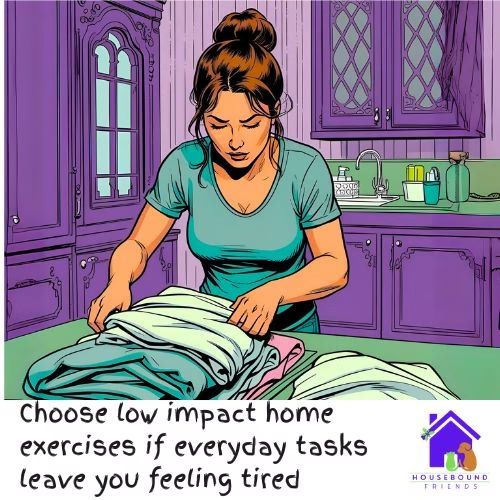
- Low Impact: When you feel tired after simple tasks like making tea or folding laundry.
- Medium Impact: If you can move around steadily and hold balance without much strain.
- Max Impact: Go for it if you’re having a good day! Mainly, those days when energy feels solid and your body’s mobile.
Always check your breathing: So, if you can talk but not sing, you’re in the correct zone. However, if you’re gasping, dizzy, or your body says “stop”, listen. Remember, rest isn’t quitting. Actually, it’s part of the training.
Frankly, this isn’t about smashing records. On the contrary, it’s about showing up for yourself with kindness and courage.
Remember: Always check your breathing: talking = good, gasping = stop.
🔥 Lower Body Focus
Targets: thighs, glutes, calves.
Primarily, bodyweight squats and lunges build strong legs and hips. Furthermore, they use your core to keep you steady. Also, jump variations bring power and a cardio boost.
- Low Impact
- Sit-to-Stand (from a chair): Sit tall on the edge of a sturdy chair with feet hip-width apart. Then, push through your heels to stand fully. Finally, lower yourself back with control.
- Seated Leg Extensions: First, sit upright, engage your core, and extend one leg straight until your thigh and calf form a line. Just hold for a moment, then lower and switch sides.
- Medium Impact
- Standing Squats (sit back, chest up): With feet shoulder-width apart, hinge your hips back as if sitting in an invisible chair. Keep your chest lifted and weight in your heels. Then, press through to stand.
- Standing Side Leg Raises (lift each leg to hip height): Stand tall, holding a wall or chair back for balance. Then, shift weight onto one leg and lift the other out to the side. Remember, keep your hips level. Finally, lower slowly and repeat.
- Max Impact
- Jump Squats (explode up from a squat): Begin in a squat position. Drive through your feet to jump straight up, extending arms overhead. Then, land softly back into the squat, absorbing impact through bent knees.
- Lunge to Knee Drive (lunge back, then drive knee up): First, step one foot back into a reverse lunge. Next, lower until both knees are at 90°. After, push through your front heel to stand. Then, drive the back knee up toward your chest before stepping back.
💪 Upper Body Focus
Targets: arms, shoulders, chest
Following on, these press movements and rows help strengthen your upper body. Whereas counter-incline pushes ease you in, full push-ups test your strength.
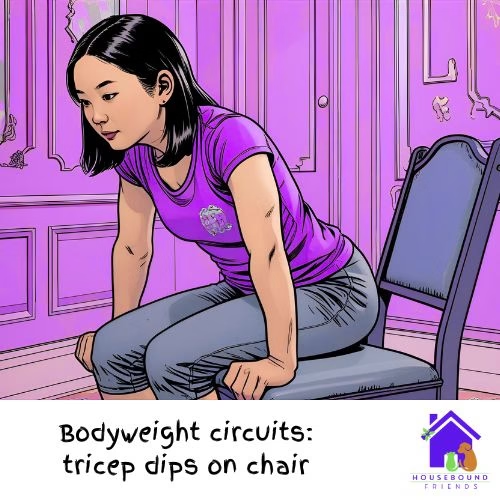
- Low Impact
- Wall Push-Ups: Now, stand facing a wall, hands shoulder-width apart. Then, lean in by bending your elbows, and push back to straighten your arms. Always keep your body in a straight line.
- Shoulder Rolls: Optionally, sit or stand tall. Now, lift your shoulders toward your ears. Then, roll them back and down in a slow, controlled circle. After several reps, reverse the direction.
- Medium Impact
- Incline Push-Ups: Place your hands on a sturdy counter or table edge. Next, take a step back with your feet so your body forms a straight line. Then, lower your chest toward the surface. Last, press up.
- Arm Circles with Water Bottles: Begin by holding a light water bottle (or dumbbell) in each hand. Next, extend your arms out to the sides at shoulder height. Then, make small circles forward. Lastly, reverse the direction.
- Max Impact
- Full Push-Ups: To begin, lie face down with hands under your shoulders. Next, engage your core and press through your palms to lift your upper body into a straight plank. Finally, lower with control, keeping elbows close.
- Tricep Dips on Chair: Sit on the edge of a sturdy chair, with your hands gripping the front edge. Gently, slide your hips forward off the chair. Then, lower your body by bending your elbows to 90°. Lastly, push back up to straighten arms.
💥 Core & Balance Focus
Targets: abs, back, posture
Mainly, core work, which improves stability and posture. Basically, static holds meet dynamic moves to give your mid-section a solid challenge.
- Low Impact
- Seated Knee Lifts: First, sit tall in a chair, feet flat. Then, engage your core by holding in your tummy. Next, lift one knee toward your chest. Last, lower your leg with control, then switch sides.
- Pelvic Tilts: Next, lie on your back or sit upright. Gently tuck your pelvis under, flattening your lower back against the floor or chair. Afterwards, release and repeat.
- Medium Impact
- Standing Knee-to-Elbow: Stand tall! Now, lift one knee and twist your torso to bring the opposite elbow toward your knee. Then, lower your leg before switching sides in a smooth motion.
- Bird-Dog: Start on your hands and knees. Extend your right arm forward as you lift your left leg back. Focus on keeping your hips level. Finish by returning and then repeat on the other side.
- Max Impact
- Plank Hold: Position yourself on forearms or hands with your body in a straight line. Squeeze your core and glutes (bottom muscles). Just hold as long as you can with good form.
- Bicycle Crunches: Lastly, lie on your back, with your hands behind your head. Bring one elbow toward the opposite knee as you extend the other leg. Then, alternate in a controlled, cycling motion.
❤️ Cardio & Full Body Boost
Targets: heart rate, overall endurance
Full-body moves spike your pulse and burn calories fast. Scale the jumpiness to suit your floor and neighbours.
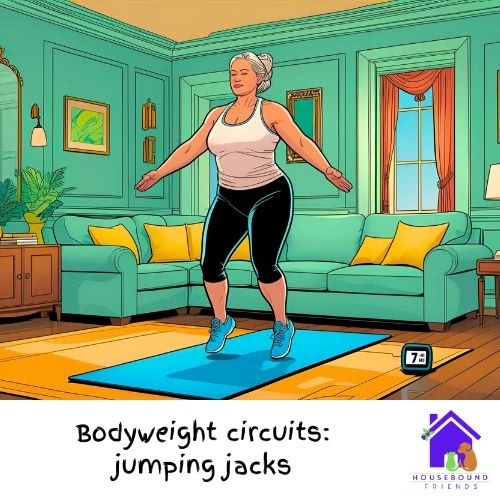
- Low Impact
- Marching on the Spot: Stand tall and lift your knees one at a time as high as comfortably. Pump your arms to boost your heart rate without the jolt of jumping.
- Arm Swings: Stand with feet hip-width apart. Swing your arms forward and back in large, controlled motions. Keep a soft bend in the knees to engage your core.
- Medium Impact
- High Knees (Controlled): Drive one knee up toward your chest, then lower it with purpose before switching sides. Maintain a steady pace without leaving the ground.
- Mountain Climbers on a Wall: Place hands on a wall at shoulder height and walk feet back. Drive one knee toward your chest, then the other, in a smooth, alternating rhythm.
- Max Impact
- Burpees: From standing, drop into a squat, place your hands on the floor, and jump your feet back into a plank. Reverse the motion—jump feet toward hands, then spring up with arms overhead.
- Jumping Jacks: Stand with feet together and arms by your sides. Jump feet out wide as you raise arms overhead, then return to start in one fluid motion.
Each mini-circuit can stand alone or join a longer routine. Pick one muscle group to focus on per session or mix and match for variety!
📈 How to Increase Intensity in Your Bodyweight Circuits Over Time
Really, your bodyweight circuits should evolve with you. As your strength and stamina improve, gentle progression helps avoid plateaus. In fact, upping the intensity keeps things interesting. The beauty of these routines lies in their adaptability. Smoothly adjust to your changing energy and ability.
Now, here’s how to gradually level up:
- 🔁 Add another round to your circuit once it starts to feel too easy.
- ⏱️ Reduce rest time between exercises. Just try trimming five seconds at a time.
- 🔄 Swap in a harder move. Simply, upgrade a low-impact movement to a medium version. But only when you’re ready.
- 📲 Use a timer app to stay on track without pushing too hard. Actually, many apps let you pre-set rest and work times.
- 📊 Track your progress on moves like planks or squats. Consistent minor improvements are a big win.
So, progression isn’t about pushing through pain. Actually, it’s about gently building capacity. All while tuning in to how your body feels each day. Ultimately, that’s the heart of sustainable bodyweight circuits.
🛋️ Can I Do Bodyweight Circuits in a Small or Shared Space?
Yes, because bodyweight circuits are ideal for compact living. Regardless, if you’re in a flat, a shared house, or just trying not to wake the neighbours. Honestly, you don’t need a home gym or lots of room to move. Just a yoga mat’s worth of space is often enough.
So, here’s how to make it work:
- 🪑 Keep it minimal: Simply, use chairs, walls, and a small mat. Absolutely, no special equipment needed.
- 🧘 Go low-impact: Largely, choose quiet-floor options like seated moves, or wall climbers. Also, try controlled steps instead of jumps.
- 🥿 Invest in quiet gear: Especially, noise-reducing footwear (like training socks or soft-sole trainers). In addition, a thick mat helps absorb impact and dampen sound.
- 🕊️ Think “soft but strong”: Primarily, focus on control, posture, and breath rather than speed. After all, slower moves can still be seriously effective.
Whether you’re exercising in a studio flat or a shared lounge, bodyweight circuits adapt to your environment. Additionally, you can enjoy home exercise without annoying your flatmate, partner, or pets.
✝️ Why This Matters: Strength as Worship
Well, moving your body, even gently, is one way to honour the vessel God created. Yet, Bodyweight circuits don’t just build muscle. Really, they shape rhythm, patience, and grace. So, there’s something deeply spiritual about showing up for home exercise, day after day. Even when no one sees.
The quiet effort is not overlooked by Him. So, you don’t need gym mirrors or fitness classes to be worthy of strength. Since you are already known and already loved. Therefore, your faithfulness in movement is a kind of worship.
So treat each small step as sacred. Because it is.
💬 Final Thoughts: Make Movement Your Own
Ultimately, there are no rules here — only invitations. Bodyweight circuits give you a framework, not a finish line. Simply, mix and match. Guiltlessly, do less when you need rest. Add more when you feel strong.
Truly, rest days are not a weakness. Actually, they’re part of a plan. So is grace.
Thus, if you’ve created your own version of a circuit or you’ve felt something shift spiritually while moving, feel free to share. Your story may be the encouragement someone else was quietly praying for.
🔗 Additional Resources
Here are trusted, regional resources offering safe and accessible bodyweight circuits and related movement ideas—especially useful for people with limited space, mobility or varied energy levels:
- UK – NHS Fitness Studio: Free instructor-led strength, aerobic, Pilates and flexibility videos you can follow at home, including bodyweight-based workouts you can adapt to your pace.
- Ireland – HSE “Every Move Counts” and “Be Well“: The national guidelines emphasise bodyweight exercises and short bouts of activity as effective and accessible for most people.
- USA – Mayo Clinic: A library of clear tutorials on push-ups, squats, lunges, planks and other bodyweight strength moves that you can arrange into circuits.
- Canada – ParticipACTION: Offers flexible, no-equipment workouts and video challenges that feature bodyweight circuits or calisthenics you can do in small spaces.
- Australia – Better Health Channel: Explains the benefits of resistance training using body weight and recommends two to three weekly sessions with these safe, gentle exercises.
- New Zealand – Health Navigator NZ: Advocates resistance-type activity—including bodyweight moves—to support strength, mobility and balance in everyday routines.
Feel free to link directly to the ones that resonate best with your audience or region.
Read related blog posts: Practical Chair Home Exercise Time. Turn the Tables! for more seated chair exercises. Also, for an overview of other home exercise types, read Self-Care: Innovative Home Exercise That Will Need Little Time.




